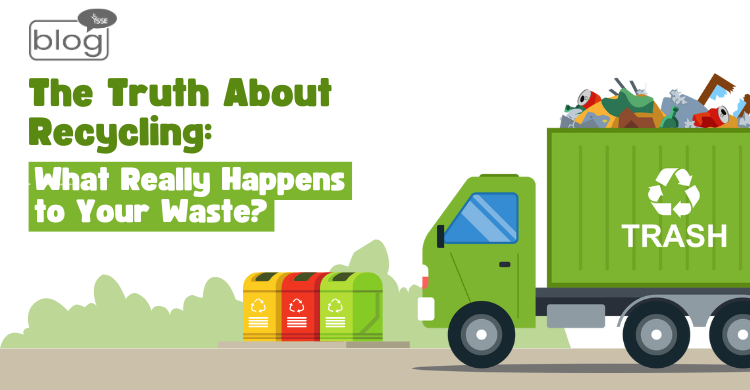Recycling has been at the core of green causes in recent decades, a symbol of our collective commitment to reducing waste and saving the planet. But just how well do we understand what happens to our recyclables once they have passed through our front doors? The truth of recycling is not as simple as the homely story of “put it in the bin, and it is made into something new.” Let’s trace your waste from start to finish and discover what goes on behind closed doors.
Sorting and Collection
It all starts with collection. Curbside pickup, drop-off sites, or specialty programs gather your recyclables and transport them to a Materials Recovery Facility (MRF). Sorting follows. Laborers and machines sort the materials by type—paper, plastic, glass, and metal. Some use high-tech conveyor belts, magnets, optical scanners, and even artificial intelligence to make the process faster.
But contamination is a big issue. Dirty containers or non-recyclable materials can bring the system crashing down. A dirty pizza box or a plastic bag can clog machinery or render whole batches unusable.
Processing and Cleaning
Following sorting, materials are washed and processed. Paper is pulped, plastics are shredded and melted, glass is crushed, and metals are baled. Each material undergoes some treatment to make it ready for reuse. Plastic bottles, for example, are made into pellets, which can be used to produce new products.
But all materials aren’t created equal. Glass and aluminum can be recycled time and again without losing anything in quality, whereas plastics deteriorate over time and can be recycled only a few times.
Manufacturing and Repurposing
The recyclables are marketed to producers, who transform them into new items. Recycled paper can turn into cardboard boxes, while recycled plastic can turn into clothes, furniture, or even new bottles. This is the phase where the ecological worth of recycling comes under full spotlight since it conserves the need for virgin material along with reducing energy consumption.
The Fact of Recyclability
Recyclability will depend on the material. The recycling of aluminum cans and glass is easy; however, recycling plastic is a separate case.
Complexity of Plastic: Plastics come in several types. All these plastics have different chemical compositions, so only a couple may be recycled. These types may include PET (#1) and HDPE (#2) as the most common ones. Others are polystyrene (#6), and they are usually rendered too difficult or expensive to recycle, so they tend to be landfilled or incinerated. Plastics that can potentially be recycled may often not be actual candidates for recycling because it depends on the market.
Degradation: Plastics lose their quality during the recycling process, thus limiting the number of times they can be recycled. Consequently, even if a plastic bottle is recycled, it may not be made into a new plastic bottle. Instead, it may be turned into some other less valuable product, such as carpet fibers, before eventually being disposed of as waste.
Costs to the Environment and Energy Involved
While it is a better alternative than landfilling, recycling also has its environmental costs. The collection, transportation, and processing of recyclables all take ample energy, usually sourced from fossil fuels. Some other recycling processes also tend to release pollutants into the air and water.
Concerned about the foregoing? What Do We Do? So, what can be done to improve matters?
Reduce and Reuse: The most effective way of waste reduction is to consume less in the first place. Choose lower-packaged products, opt for reusables rather than disposables, and repair before you replace.
Recycle Right: Be informed about what is recyclable or not in your area. Make sure you clean all your recyclables and do not introduce plastic bags into the recycling process.
Support Responsible Companies: Find companies that are interested in sustainable packaging and use recycled products in their goods.
Champion for Change: Support policies that create extended producer responsibility, meaning making manufacturers responsible for the life cycle of their products.
Recycling is not a panacea, yet it represents a cornerstone in the much larger structure of strategy toward waste management and environmental protection. By understanding the realities behind recycling, we can make conscious choices and stand up to seek such changes in a given system that addresses the root causes of waste generation. In short, the reality is that it’s a messy, less-than-perfect system, but it’s worth trying to fix. Every bottle, can, or piece of paper you recycle edges us that much closer to a more sustainable world. Remember: Reduce, reuse, and recycle. Together we can change course on waste toward a cleaner, greener planet for generations to come.
To read more blogs, click here.
Writer
Nayela Binte Azad
Intern, Content Writing Department
YSSE

